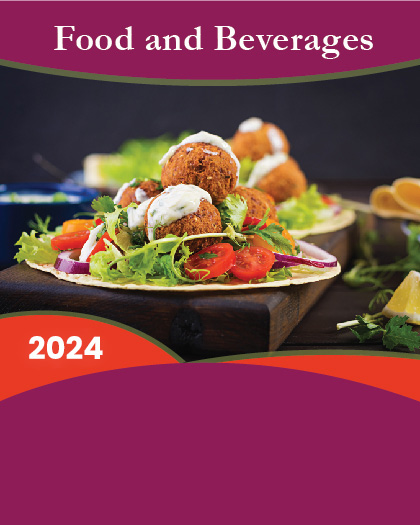
The clean label ingredients market was valued at $38.8 billion in 2018, and is projected to reach $64.1 billion by 2026, growing at a CAGR of 6.8% from 2019 to 2026. Clean label products are those which are made by using very few ingredients and are natural or organic. Although organic farming is old term, clean label ingredients is a new trend in the food & beverage industry. Clean label does not always mean that the ingredients are organic, but in some cases it also refers to the less amount of ingredients used in it. The more ingredients are added in the food becomes more artificial. Consumers are demanding natural and organic ingredients for better lifestyle and to minimize the risk of health and disease that occurs due to synthetic and artificial food items. Moreover, Organic refers to more than the food product itself. Its production techniques must meet the standards set by the food authorities of the respective regions. Some compounds, which are permitted by food authorities as organic food products are unacceptable in clean-label products category, such as potassium bicarbonate, calcium hydroxide, and ammonium bicarbonate.
The popular trend of healthy living has increased awareness among consumers about considering the components used in the food products. Consumers choose natural, healthy, simple foods, and they are avoiding foods made with chemical modifiers. Consumers are often very careful about choosing a clean label product when it comes to products that are consumed by children. Other important product categories, in the clean label ingredients market include nutrition bars/beverages, dairy, cereal, yogurt, and cereal. Clean label caramel ingredients, brined vegetables, cheese concentrates, dairy concentrates, vegetable purees, essential oils, flavors, gums, industrial garlic, tomato powder, and salt reducer are some of the most preferably used organic food items. Income level and age group play major roles in determining the purchase of clean label products. Millennials are clearly driving this shift; however, a rise in number of baby boomers are joining the movement as well.
The consumer preference toward organic food is on a constant rise owing to increase in health consciousness among consumers. Further, surge in disposable income, improvement in living standard, rise in health expenditure, and large scale promotion of organic food owing to its benefits, such as chemical free and natural, drive the growth of organic food products.
The use of artificial ingredients, additives, or colorants such as E133, and the adoption of controversial food technologies like GMOs have prompted consumers to become worried about adverse health effects entailed in this food system. Also, in a global marketplace regional attitudes can have major implications, making it a challenge to establish a universal set of standards for clean label ingredients. All natural/cleaner ingredients are more expensive, and they potentially shorten the shelf life of the product. They also increase inventory of products to meet the needs of more restrictions. This makes the overall cost of production high and this gives rise to the cost of the product. This factor is posing a potential threat for the growth of the clean label ingredient market. Clean label as an umbrella trend, is growing momentum. Consumers rise in interest in ingredients and their origins influence new product purchases. This trend is expected to generate lucrative opportunities in the clean label ingredients market.
The food industry has also started responding to the increase in demand by consumers of clean label products by supplying the food products, which are perceived as cleaner. For instance, Nestle USA removed all of artificial colors from their chocolate candy products, and removed artificial flavors from the entire line of snacks and frozen pizzas. In the announcement made in February 2016, Mars also pledged to remove artificial colors from human food products over five years. Most recently, Red Bull has launched a new line of organic soda products, which are only available in two regions of the U.S. This organic soda line is another example of how companies are embracing the clean label concept.
The global clean label ingredients market is segmented into type, application, form, and region. Deepening on type, the market is categorized into natural color, natural flavor, starch & sweetener, natural preservative, and others. On the basis of application, the market is divided into beverage, bakery & confectionary, sauce & condiment, dairy & frozen dessert, and other processed foods. On the basis of form, the market is categorized into powder, and liquid. On the regional basis, the market is studied across North America, Europe, Asia-Pacific, and LAMEA.
Some of the key companies profiled in the report include Cargill Inc., Archer Daniels Midland, company, Corbion Inc., Kerry Group PLC, Ingredion Incorporated, Tate & Lyle, Sensient technologies, Frutarom, koninklijke DSM N.V., Chr Hasen A/S, and Dupont.
KEY BENEFITS FOR STAKEHOLDERS
- The report provides an extensive analysis of the current and emerging market trends and opportunities in the clean label ingredients market.
- The report provides detailed qualitative and quantitative analysis of current trends and future estimations that help evaluate the prevailing market opportunities.
- A comprehensive analysis of the factors that drive and restrict the growth of the market is provided.
- An extensive analysis of the market is conducted by following key product positioning and monitoring the top competitors within the market framework.
- The report provides extensive qualitative insights on the potential segments or regions exhibiting favorable growth
KEY MARKET SEGMENTS
? By Type
o Natural Color
o Natural Flavor
o Starch & Sweetener
o Natural Preservative
o Others
? By Application
o Beverage
o Bakery & Confectionary
o Sauce & Condiment
o Dairy & Frozen Dessert
o Other Processed Foods
? By Form
o Powder
o Liquid
? By Region
o North America
? U.S.
? Canada
? Mexico
o Europe
? UK
? France
? Netherlands
? Germany
? Turkey
? Rest of Europe
o Asia-Pacific
? China
? Japan
? India
? South Korea
? Australia
? Rest of Asia-Pacific
o LAMEA
? Brazil
? Saudi Arabia
? South Africa
? Rest of LAMEA
























